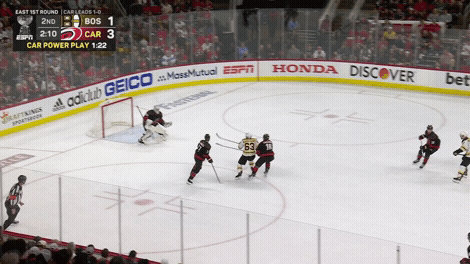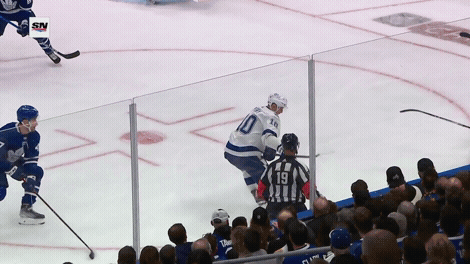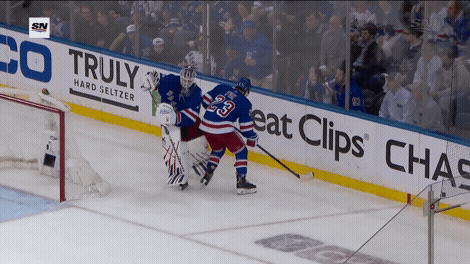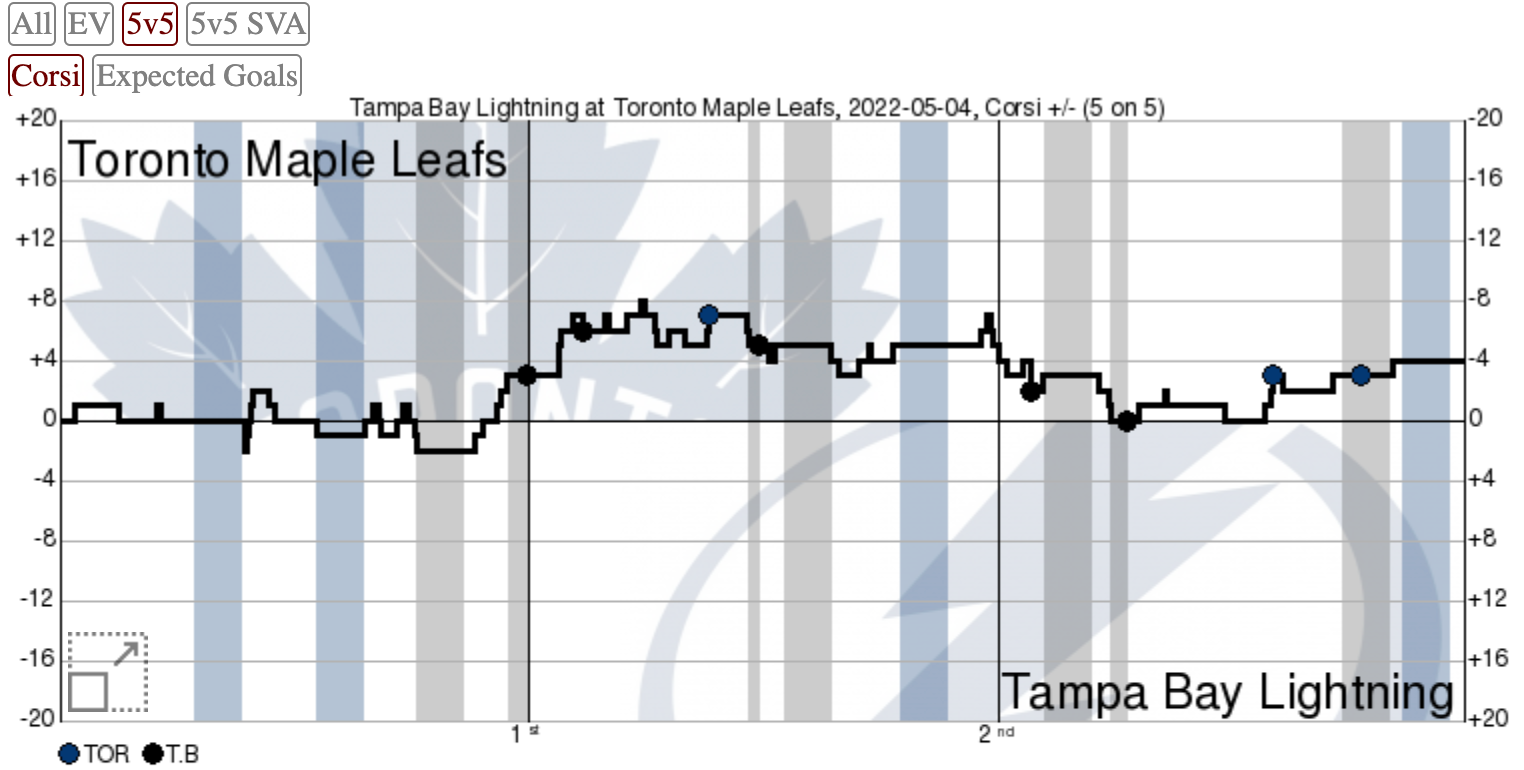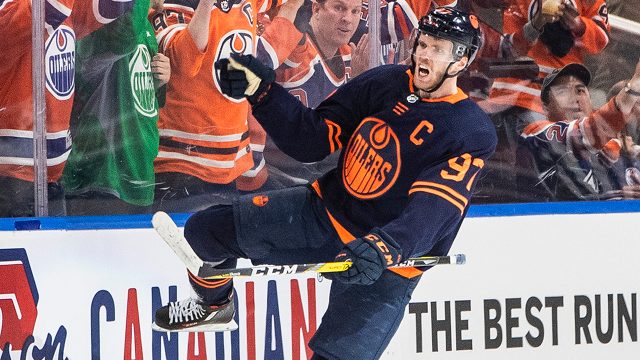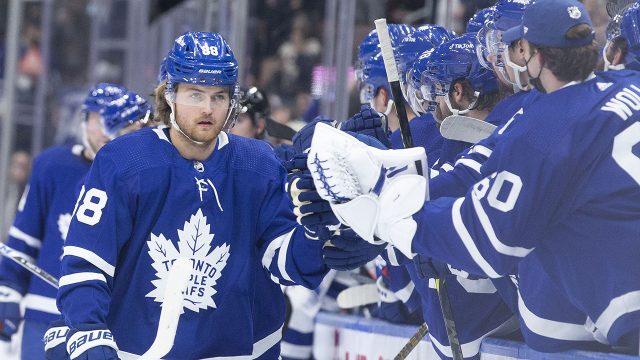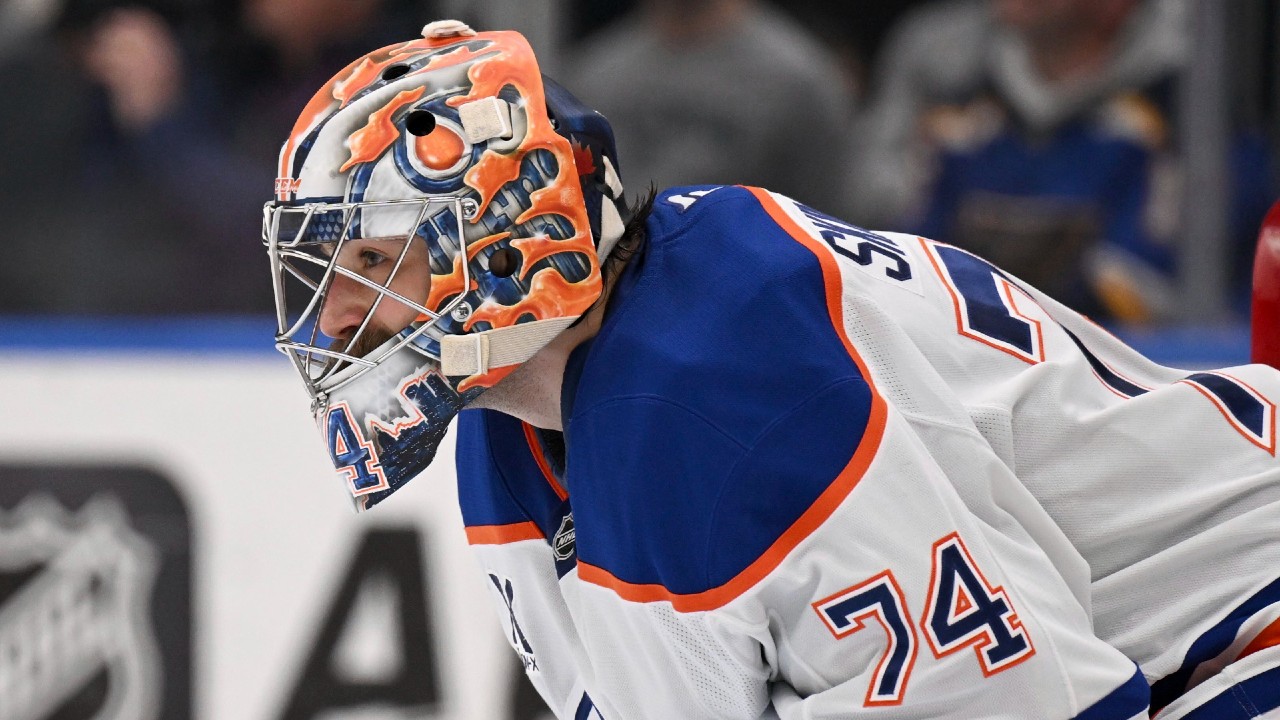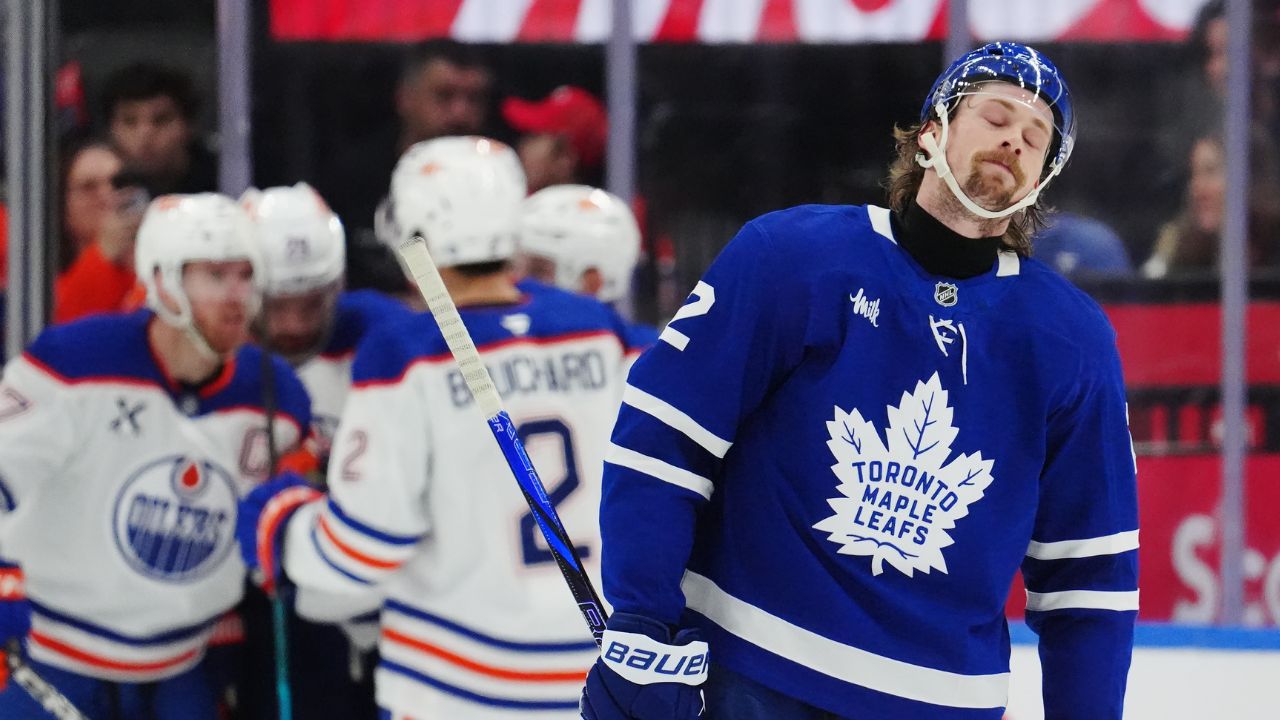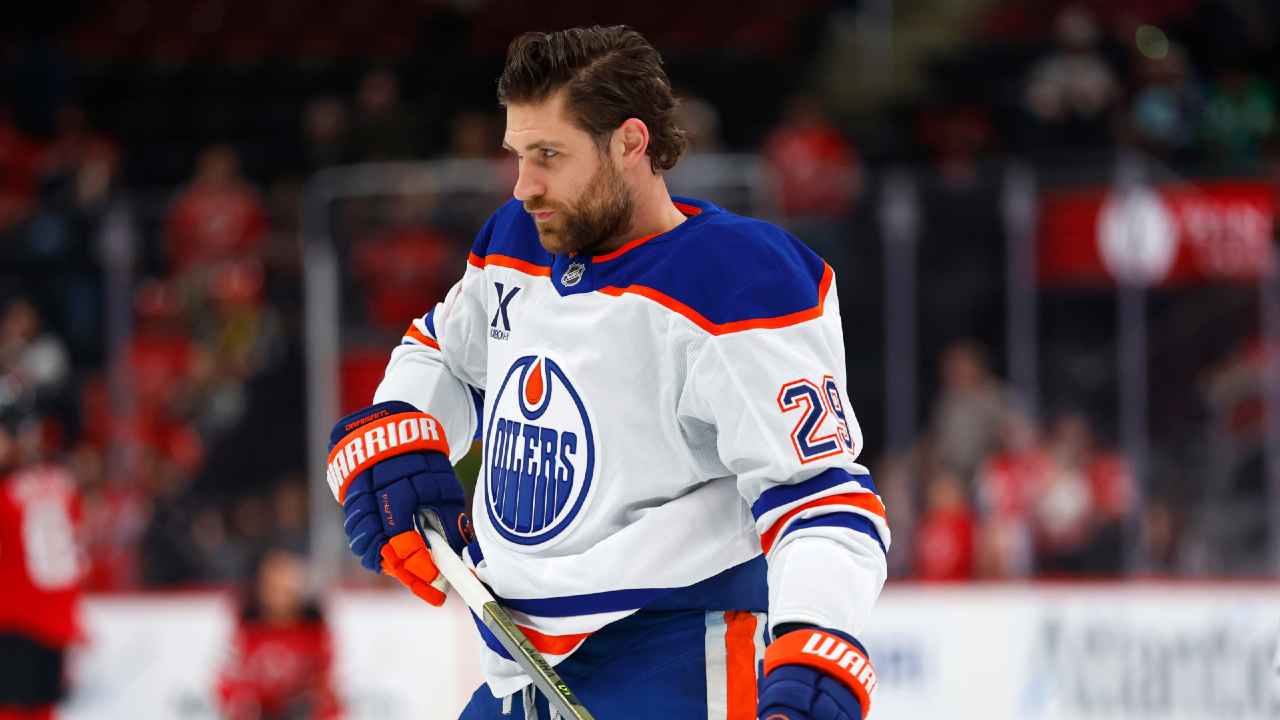
Are you not entertained!?
It’s night No. 5 of the Stanley Cup Playoffs and series are shifting to new cities for the next two games. The lower seeds now have the last change and home-ice advantages and this is when we really start to get a sense of who is in control of which series.
Toronto and Tampa, Minnesota and St. Louis, and Edmonton and Los Angeles are all even at 1-1 through two games, while the Carolina Hurricanes look to take a 3-0 stranglehold over the Bruins on Friday night.
Here is what we’re watching for tonight…
Goalie protection becoming a topic?
Goaltenders are always a story in the playoffs and just four days in we’re already seeing a few examples of why it’s important to have more than one reliable option (and why that’s a luxury not everyone has, or can afford under the cap).
In Pittsburgh, Louis Domingue entered Game 1 in the third overtime period after dining on a tasty spicy pork and broccoli dish. An in-game lower-body injury to Casey DeSmith was thought to be just cramping at first, but kept him out of Game 2 as well.
In Carolina, Frederik Andersen missed the last few games of the regular season and still wasn’t ready to go for the start of their first round series against Boston. In Game 2, Antti Raanta was injured on a controversial play engaged by David Pastrnak, who seemed to not only fail to try and avoid contact, but went out of his way to make sure there was contact.
The original five-minute major on the play was overturned into a two-minute minor. Talk amongst yourselves about whether or not injuring a goalie should be five minutes.
Pyotr Kochetkov came in to replace Raanta and, for the fourth time in his young career, he showed very well for Carolina. He, too, was on the receiving end of a Bruins forward seemingly looking to make contact, when Brad Marchand crashed the crease on a play and, similar to Pastrnak, got his stick up a little high on the goalie. Not backing down, the 22-year-old netminder stood up to Marchand.
As of Friday morning, it wasn’t clear who Carolina’s Game 3 starter would be, though Kochetkov starts the day as the favourite. In the Carolina-Boston series especially, goalie engagements is something to keep an eye on.
“What do you think?” Canes coach Rod Brind’Amour said when asked if he felt the Bruins were intentionally coming after his goalies. “You can’t get any more obvious.”
In Toronto for Game 2 against Tampa Bay, Pat Maroon crashed the crease hard after Jack Campbell had smothered the puck, and pushed the Leafs defender into his netminder. Two minutes. And you can imagine how much greater uproar there would be, how much hotter a topic goalie interference would be, had there been an injury here.
On Thursday night Jeff Carter had a run-in with Igor Shesterkin that caused a couple minutes of concern for Rangers fans. Shesterkin lay on the ice for a couple minutes after this play and, as we know, if anything were to happen to him, New York’s chances would be tossed in the air. Two minutes.
Crashing the crease is part of playoff hockey and most years the topic of “protecting the goalies” rises as a talking point. So far, Pittsburgh and Carolina are on to their third string goalies and have had to get an EBUG at the ready, which would be nothing short of a disastrous scenario for a team forced into using one for a playoff game, and a tough look for the NHL.
Penalty standards, which we highlighted on Wednesday, are leading to a rise in power plays so far in these playoffs. Stick penalties and obstruction especially seem to have a lot to do with that. Could the league put more of an emphasis on goalie protection before long here too?
Who will win the Battle Of The Special Teams in Game 3 of Lightning-Leafs series?
The referees sent a very early message in the Tampa-Toronto series when 11 power plays were handed out in Game 1. Eleven more man advantages came in Game 2, though the Lightning showed better discipline and got seven of them.
“The refs set the standard early,” Leafs coach Sheldon Keefe said after the Game 2 loss. “They took one after the whistle, which made it pretty clear they were going to call it like that after the whistle and we didn’t do a good job of reading and responding to that. I also thought at times we took some tough penalties during the play. They were calling a lot of holding, tripping, those kid of things.”
In the second-to-last regular season meeting between these two — a 6-2 Leafs win — there were three power plays total. In the final regular season game they played — an 8-1 Lightning win — it was called a lot tighter, played more physically, and ended with five power plays going to both sides. And that seems to have set the tone for the playoff series.
So, the key to this series might just be the special teams units.

In Game 1, Toronto’s Power Kill was smothering and created more chances than it allowed. In Game 2, Toronto’s PP started well enough but then Tampa generated four shots in the second period on the PK and allowed none against. Both PK units have showed rather well and will have to keep that up. So far, Tampa’s power play has three goals to Toronto’s one (the Leafs had the best regular season PP). Toronto has both penalty kill goals in the series, though.
Will Kyle Clifford return to the lineup for Game 3 after serving a suspension for a needless check? Will Jason Spezza, perhaps their best player in last year’s playoff series loss to Montreal, get inserted for a lower level of penalty risk? And does Wayne Simmonds find his way out after taking a couple of costly penalties in Game 2?
If the standard changes as the series goes on, or if the teams find more discipline and there happens more 5-on-5 play, Toronto would not be in a bad spot. Even in Game 2’s loss Toronto had a 22-21 shot advantage at 5-on-5, though the Lightning generated a couple more high danger looks. At full strength, it was a much more even game than the score would indicate.
The best part of it for Toronto? At 5-on-5 Nikita Kucherov was outshot 9-5 when he was on the ice, Steven Stamkos 8-3 and Ondrej Palat 8-2. Keeping those top players and that line down is also key to Toronto’s success and so far they have done a pretty good job of that at 5-on-5.
Will the penalties keep up? Who will have the better power play? Or can this thing return to more 5-on-5 play? It’s a key storyline to watch in this tight series.
Is this the end of the Bruins as a contender?
Sometimes, most times even, what happens in the regular season between two teams doesn’t directly carry over to the playoffs. Lose all your regular season matchups against your first round opponent? Well, in the playoffs things change and you start at zero again. Time and again we’ve seen teams that have lost a regular season series come through on top in a post-season best-of-7.
But in the case of the Carolina-Boston series, the regular season has in fact been an indicator.
Carolina won all three regular season meetings and none of them were particularly close. The aggregate score was 16 for Carolina and 1 for Boston. Through two playoff games, Carolina has scored 10 times to Boston’s 3 — the Bruins have been trailing by at least two goals for more than half the minutes played so far.
It hasn’t been close.
Brad Marchand followed a quiet Game 1 with a one-assist, three-shot effort in Game 2, and while he tried to kick up the dust a little it didn’t lead to anything favourable for his side. An attempt to get into rookie netminder Pyotr Kochetkov’s grill didn’t phase the youngster, who stopped 16 of the 17 shots he faced the rest of the way after the run-in.

In Game 1, Carolina’s skill overwhelmed Boston’s and they shut down the Bruins’ PP. In Game 2, Boston started strong enough, but after they couldn’t find an early goal, momentum swung back in Carolina’s favour. Boston tried to get physical to shake the Canes off, but not even that worked.
To this point in the season, Patrice Bergeron has scored nearly every one of Boston’s goals against Carolina this season, the only exception being Taylor Hall’s Game 1 marker. Boston hasn’t been able to take advantage of the fact Carolina had to start its backup in Game 1, and then turn to its green third-stringer in Game 2. In fact, it’s Boston in something of a goalie crisis, as they will turn to Jeremy Swayman for Game 3.
Boston, so far, has simply been outclassed. Carolina has been building for a playoff breakthrough for some time now, but it’s been the Atlantic Division’s big hitters who have kept them down. Boston swept the Canes in the conference final in 2019 and whisked them away in five games during the 2020 bubble playoffs. Last year it was Tampa Bay who booted the Canes in five.
This series could be where the streams cross for these two organizations, with Carolina stepping up a tier and Boston perhaps stepping down, officially. We’re not finished yet of course, and a strong Game 3 win from the Bruins would leave us having to recalibrate perceptions. It’s just a fairly large sample now of Carolina being too much for Boston to handle.
A 3-0 hole for the Bruins might bury the idea this is still a Cup contending roster.
Can the Oilers fight through and assert control of their series versus Kings?
As the series shifts to Los Angeles, the Kings will have last change for the next two games and a choice of who to focus Anze Kopitar and, especially, Phillip Danault on.
In Game 2, Connor McDavid spent most of his 5-on-5 time against the Kopitar line with Andreas Athanasiou and Adrian Kempe and had a narrow shot advantage. Draisaitl spent 5:48 of his 5-on-5 time against Kopitar and 5:25 against Danault and was outshot 9-1 by those two in Game 2.
Todd McLellan is a big line matching coach and it will be as interesting to see how he chooses to deploy his players at home as it will be to see if the Oilers’ big two centres can fight through, make offence happen and overcome this tight defence and available ice.
This is what the playoffs are about, and what the Oilers are still proving they can do.
The physical nature of the series is a developing storyline, too. Connor McDavid’s uptick in the hits category, his challenge on forechecks, is leading us to wonder if he’s still levelling up, and if we’re right now seeing the best version of McDavid yet.

Will we get a close game between Blues-Wild now?
Part of the story of Round 1 so far has been the amount of blowouts we’ve seen. Strange and unexpected, given how relatively close the regular season was, and how many of these teams are considered contenders.
Seven of the 16 Stanley Cup Playoffs games played so far have been decided by four or more goals and two of them have come in the St. Louis-Minnesota series.
In Game 1 it was all St. Louis in a 4-0 shellacking where David Perron scored a hat trick and Ville Husso was fantastic. In Game 2, it was all Minnesota in a 6-2 decision, with Kirill Kaprizov recording a hat trick, Joel Eriksson Ek getting two, and Marc-Andre Fleury quelling any talk of turning to Cam Talbot for now.
This series was billed as the potential “best of the first round” given how deep these two are on offence, how tough they are physically, and how sturdy they both have been in net. But the first two games have been wild swings in either direction.
While the games haven’t been close, the series is shaping up to be a long one and we’re bound to get a tight result soon. This one has seven games written all over it — is tonight the game where the score starts to reflect that?



